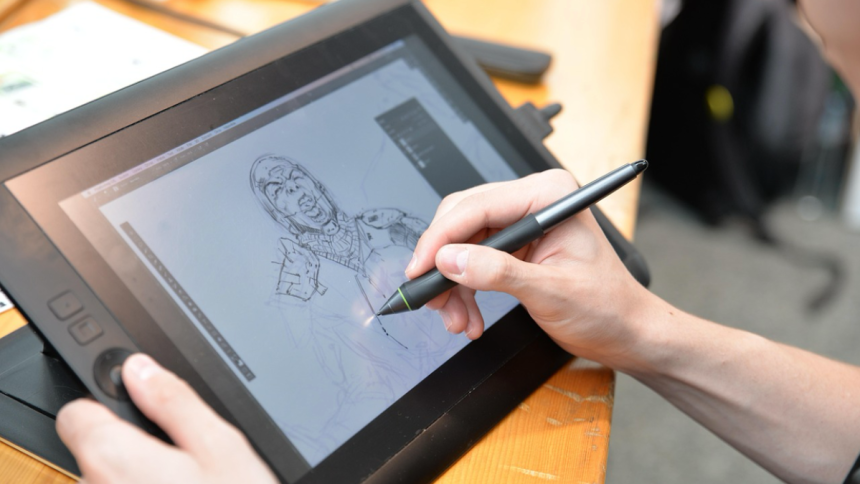A few years ago, turning a sketch into polished digital art meant hours in Photoshop or Illustrator. But not anymore. With AI, designers can now bring their ideas to life faster, smarter, and with far less friction.
This shift isn’t just about convenience. It’s changing the entire creative process. Tools powered by machine learning help designers convert rough sketches into visuals, complete with colors, textures, and artistic flair. What’s even more amazing is that most tools often do this in real-time.
This evolution has given rise to a new concept: sketch to image. Tools in this space let you upload a hand-drawn sketch and watch AI turn it into a digital masterpiece. They allow you to do so with almost no manual input, which is quite convenient.
In this article, we’ll look at five of the smartest ways designers are using AI to turn sketches into stunning digital art.
1. AI-Powered Sketch Recognition
One of the most impressive advances in recent years is how accurately AI can now recognize and interpret hand-drawn sketches. Thanks to neural networks and advanced computer vision, tools can understand shapes, lines, and proportions even when the original drawing is rough or abstract.
This means you can sketch an idea on paper, snap a photo, and upload it to an AI tool. Within seconds, it begins to build out a digital version of your work.
Sounds fun, right? But how do these tools manage to do what looked like an impossibility just the other day?
These systems work by training on massive datasets of drawings and images. Over time, they’ve learned to spot patterns in everything from facial features to product outlines.
This sketch-to-image process has become a game-changer for illustrators and UX designers. In fact, even architects are using it to digitize ideas quickly.
2. Automated Colorization and Shading
Turning a black-and-white sketch into a full-color illustration used to be one of the most time-consuming steps in the design process. But with AI, you can now add color, shading, and texture automatically.
Tools like DeepArt and GauGAN analyze your sketch and intelligently apply lighting, color palettes, and artistic textures. They don’t just fill in the blanks. These tools mimic how artists apply depth, highlights, and gradients.
Some of the benefits you get from using these tools include faster workflows, saving hours of manual coloring. They also integrate more creativity into your work, and you’re guaranteed better output.
If you’re a comic book writer, for instance, you can use AI colorization in your comic book illustration to bring inked panels to life fast. Instead of coloring each frame manually, you can apply consistent palettes and lighting effects across pages with just a few inputs.
This not only speeds up production but also helps small teams create professional-grade visuals without relying on large post-production teams.
3. Style Transfer Capabilities
Here’s where things get even more exciting. With AI style transfer, designers can apply specific art styles to their sketches, like turning a doodle into a Van Gogh painting or a character sketch into anime.
How? AI learns styles from datasets of famous artworks or media genres. Then it overlays that style onto your sketch, while preserving its structure and composition.
Designers are using style transfer in:
- Game design to apply consistent aesthetics to character art.
- Comic creation for generating panels in specific artistic styles.
- Marketing and media to produce stylized content that grabs attention.
Style transfer not only saves time but also creates visual consistency across large projects, and it’s catching on fast. A recent industry report forecasts that AI-powered design tools could generate nearly $3 billion annually by 2029, showing how fast this technology is being adopted in creative industries.
4. Real-Time Prototyping
AI doesn’t just help with polish, it speeds up iteration. With real-time rendering, designers can upload sketches and watch them evolve live on-screen.
This is especially useful for UI/UX designers mocking up wireframes. Product designers testing shapes and illustrators exploring concepts with quick visual feedback can also benefit from real-time rendering.
Instead of reworking sketches manually, you can tweak lines, update inputs, and watch AI make adjustments in real time. This makes brainstorming faster and prototyping more fluid, a big plus in fast-paced creative environments.
5. Enhanced Collaboration & Cloud Tools
Design isn’t a solo act anymore. Today’s teams often work remotely from different continents. That’s why cloud-based AI tools have become essential.
With platforms like 3D AI Studio, designers can:
- Upload and convert sketches from anywhere.
- Share progress with collaborators.
- Generate multiple image styles quickly.
- Store versions in the cloud for easy access.
This AI-powered cloud automation helps maintain version control and reduce miscommunication. It also allows teams to build on each other’s ideas, all without needing to meet in person.
Conclusion: Blending Human Creativity with AI Precision
We’re living in a golden age for designers. AI doesn’t replace your creativity, it amplifies it. From real-time prototyping to automated shading, sketch to image tools are transforming how ideas turn into art.
If you’re still scanning, tracing, and manually coloring your sketches, now’s the time to try something smarter. Let AI handle the heavy lifting so you can focus on what really matters: the creative spark.
Ready to see the difference? Grab your sketchbook, draw up a quick concept, and upload it to a sketch-to-image tool. In minutes, you’ll have a polished digital version, no long hours or steep learning curves required.
Lynn Martelli is an editor at Readability. She received her MFA in Creative Writing from Antioch University and has worked as an editor for over 10 years. Lynn has edited a wide variety of books, including fiction, non-fiction, memoirs, and more. In her free time, Lynn enjoys reading, writing, and spending time with her family and friends.















